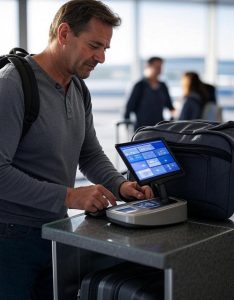 Airlines enforce strict cabin luggage rules to streamline travel and reduce fuel use. Most carriers limit cabin bags to 10 kg and dimensions around 55×40×20 cm, including handles and wheels. These restrictions vary slightly by airline, so checking specific policies before packing saves hassle. A well-packed bag not only fits within these limits but also supports eco-friendly travel by minimizing excess weight and fuel consumption. Understanding these rules sets the foundation for smarter, greener journeys.
Airlines enforce strict cabin luggage rules to streamline travel and reduce fuel use. Most carriers limit cabin bags to 10 kg and dimensions around 55×40×20 cm, including handles and wheels. These restrictions vary slightly by airline, so checking specific policies before packing saves hassle. A well-packed bag not only fits within these limits but also supports eco-friendly travel by minimizing excess weight and fuel consumption. Understanding these rules sets the foundation for smarter, greener journeys.
Packing smart starts with knowing the rules and using tech to stay compliant. For a clear guide, check out cabin luggage and 10kg suitcase rules explained to avoid surprises at the gate. Digital tools like portable luggage scales ensure your bag stays under 10 kg, preventing overweight fees. Reusable packing cubes, made from recycled materials, compress clothes efficiently, saving space and reducing the need for extra bags. Solar-powered chargers keep devices running without relying on airport outlets, cutting your carbon footprint.
Choosing Eco-Friendly Luggage Materials
“Choosing a bag that lasts is like planting a seed for future journeys.”
Durable luggage reduces waste and supports sustainable travel. Hard-shell suitcases, often made from polycarbonate or ABS, offer longevity but may not be recyclable. Alternatively, bags crafted from recycled fabrics, like repurposed plastic bottles or upcycled textiles, provide a lower environmental impact. Brands now prioritize sustainability, offering lightweight options that meet cabin size limits while using eco-conscious materials. “Choosing a bag that lasts is like planting a seed for future journeys,” says travel blogger Emma Green. Opt for quality over disposability to align with green goals.
Material choice affects both practicality and the planet. Hard-shell cases protect fragile items but can be heavier, increasing fuel use on flights. Recycled fabric bags are often lighter and more flexible, fitting snugly into overhead bins. Look for certifications like Global Recycled Standard (GRS) to ensure the materials are genuinely sustainable. Combining durability with low-impact design helps travelers make choices that ripple positively across the environment.
Smart Packing to Cut Emissions
Overweight bags lead to extra fees and higher fuel consumption. Every kilogram counts when it comes to aviation emissions. A 10 kg limit encourages minimalism, but tech makes it easier to stay within bounds. Digital weight meters provide instant feedback, letting you adjust before heading to the airport. Apps like PackPoint generate tailored packing lists based on your destination and trip length, reducing unnecessary items. Fewer bags and lighter loads mean less fuel burned, shrinking your travel footprint.
Efficient packing is a small act with big impact. By sticking to cabin luggage rules, you avoid checked bags, which often require additional handling and transport, increasing emissions. “I used to overpack, but now I plan with tech and pack light—it’s liberating,” shares frequent flyer Liam Chen. Reusable toiletry bottles and collapsible water bottles further cut waste, ensuring your essentials fit within the 10 kg limit while staying eco-friendly.
READ ALSO: The Crucial Role of Travel Agencies in Fostering Responsible Tourism for a Greener World
Your Sustainable Packing Checklist
Planning ahead blends tech and sustainability for stress-free travel. Start with a digital checklist to organize essentials. Use these tips to pack smart and green:
- Weigh your bag: Use a digital luggage scale to stay under 10 kg.
- Choose eco-friendly gear: Opt for packing cubes and bags made from recycled materials.
- Power sustainably: Bring a solar charger for device backups.
- Pack light: Use a packing app to prioritize essentials and avoid overpacking.
- Check airline rules: Confirm size and weight limits to avoid fees or extra trips.
Traveling light is more than convenience—it’s a commitment to the planet. By combining tech tools with sustainable choices, you can meet cabin luggage rules while reducing your environmental impact. A well-packed 10 kg bag, fitted within 55×40×20 cm, keeps your journey smooth and green. Next time you pack, think of the ripple effect: fewer emissions, less waste, and a cleaner world. Where will your sustainable travels take you?

